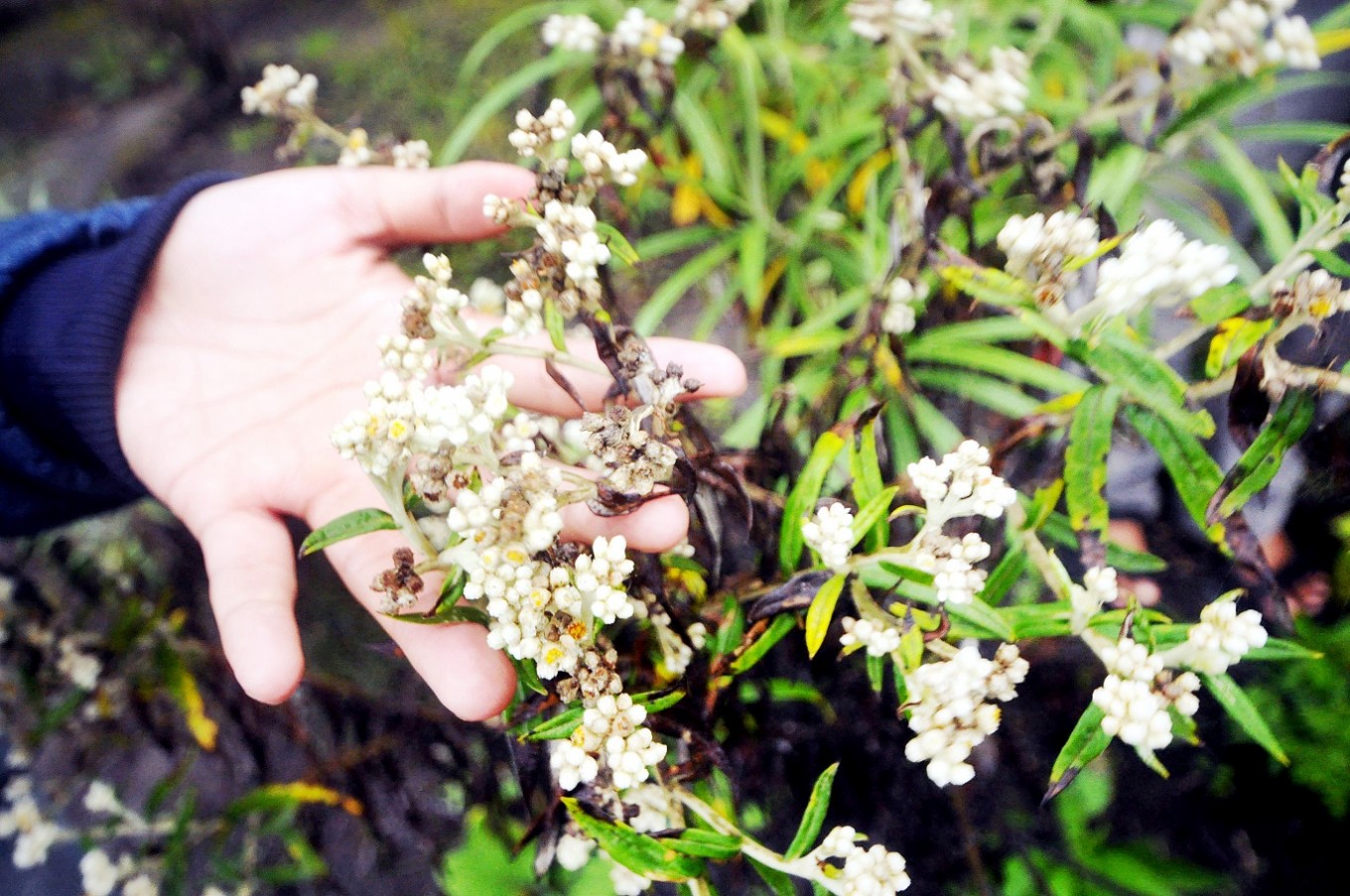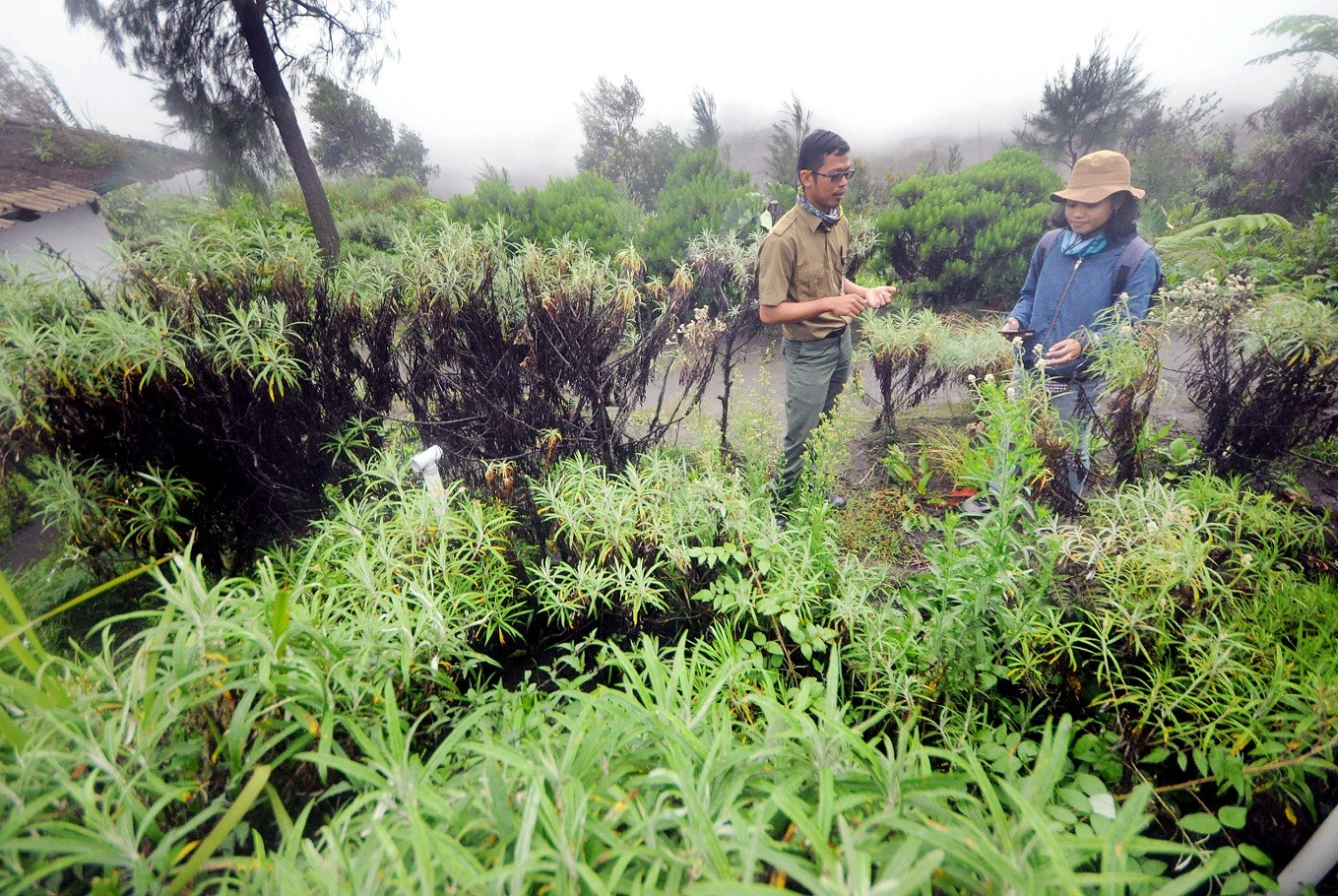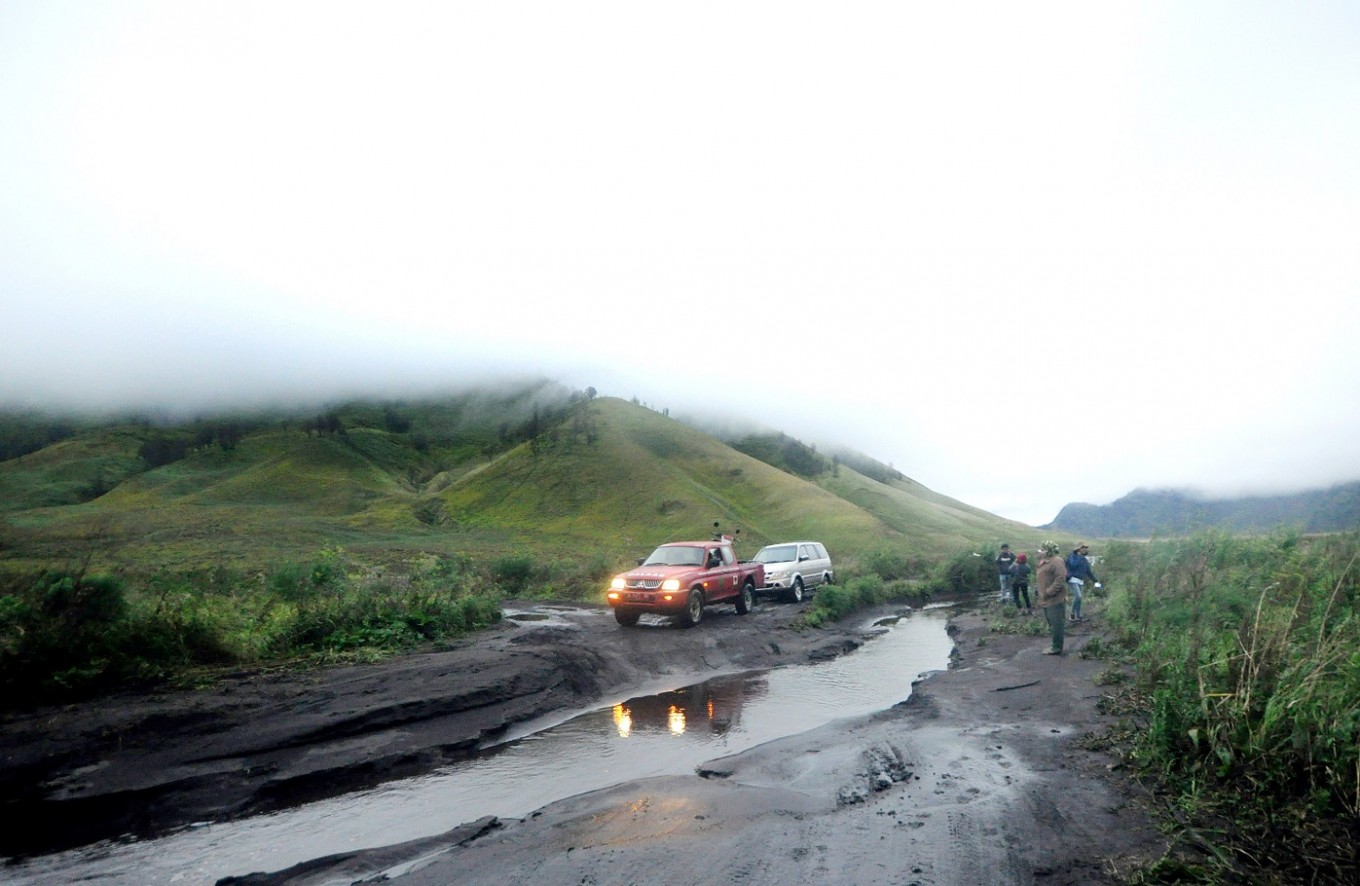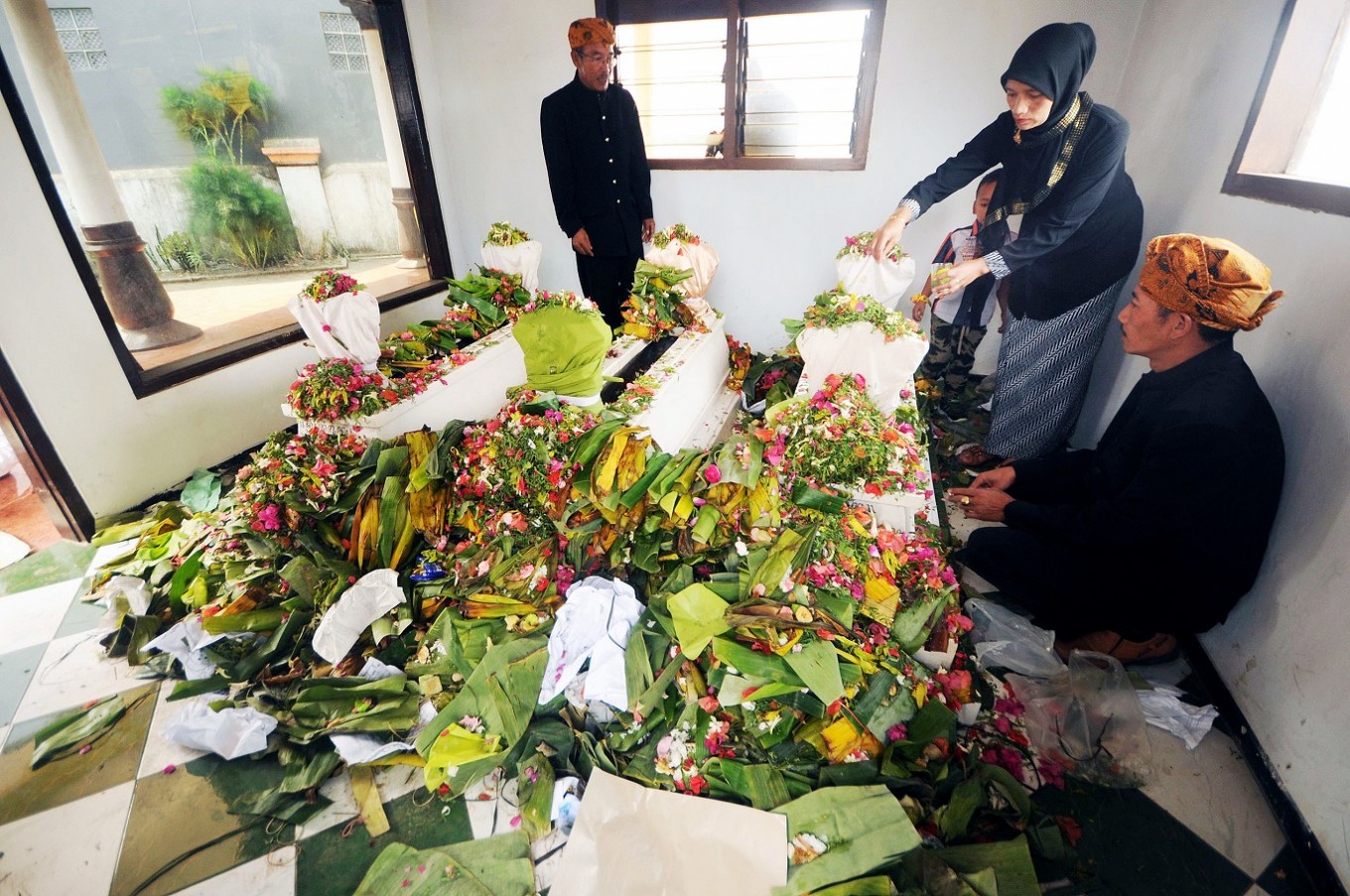Edelweiss park: Safeguarding Tengger nature and tradition
In order to save wild edelweiss from the need of young climbers to prove their love and provide balance between conservation and tradition, TNBTS is developing the concept of Edelweiss Village Tourism.
Change Size
 Rare plants: Edelweiss flowers frequently serve as symbols of true love. (JP/Nedi Putra AW)
Rare plants: Edelweiss flowers frequently serve as symbols of true love. (JP/Nedi Putra AW)
A
s one of the iconic plants of Bromo Tengger Semeru National Park (TNBTS), edelweiss is increasingly endangered. This white flower of the Javanese species Anaphalis javanica has been sought by many mountaineers and tourists visiting the zone. Growing on the park’s mountain slopes at an altitude of about 2,000 meters above the sea, edelweiss is vital to the mountain ecosystem for being capable of surviving in a barren habitat and is therefore under protection. Three of its four species found in Indonesia flourish in the national park.
The park’s tourist destination status has made edelweiss a target of visitors and climbers, especially young people who regard the flower as a symbol of eternal love. This popular symbolism of the flower has led many of them to pick the flower for a souvenir or as proof of having climbed one of the mountains.
The plant is also part of ritual offerings of the Tengger ethnic group, who call the flower tana layu because of its neverwithering characteristic. The Sanskrit words represent the community’s value of honoring its ancestors.
In order to save wild edelweiss from the need of young climbers to prove their love and provide balance between conservation and tradition, TNBTS is developing the concept of Edelweiss Village Tourism, in Probolinggo, which was expected to launch in August.

(Read also: Planned cable car network to connect Gede, Pangrango peaks)
“This concept is meant to avoid any potential conflict between edelweiss conservation efforts and other interests such as tourism and ritual performances,” John Kenedie, the head of the Bromo Tengger Semeru National Park Office (BB-TNBTS), said during an edelweiss planting ceremony in Ngadisari village, Sukapura district, Probolinggo regency, earlier this year.
John said since 2006, BB-TNBTS had been cultivating the plant in a number of villages in East Java’s Probolinggo, Malang, Pasuruan and Lumajang regencies, but to no avail.
“The cultivation was also aimed at empowering the local village community,” he said, adding that he hoped in the future, flowers would no longer be taken from the national park.
BB-TNBTS successfully developed edelweiss cultivation by using seeds in the middle of 2014 and later built Edelweiss Education Park located at the Laut Pasir resort in Sukapura, Probolinggo, which was inaugurated by Environment and Forestry Minister Siti Nurbaya Bakar in March 2016.

Initially, they targeted schoolchildren as agents of change in the conservation of edelweiss. Officials at BB-TNBTS made an agreement with the Education Agency of Sukapura district in Probolinggo and a number of schools located near the national park to educate the children on conservation and the environment by building edelweiss parks at the schools.
Birama Terang Radityo, a forestry field officer of BB-TNBTS, said it was important to encourage schoolchildren to care for their environment.
(Read also: The birth of a new living organism: Indonesia's first Earthship)
“Due to limited seedling production, planting has only involved a handful of Tengger children’s schools in Sukapura,” he said.
Edelweiss Education Park teaches children how to grow and maintain edelweiss in their schools until it blooms. This concept was later developed into Edelweiss Tourism Village, which would involve local residents and open opportunities for the rural economy.
Birama described the cultivation of edelweiss, blooming from April to August, as fairly simple, saying locals should grow it in their homes instead of picking flowers in the protected national park.

Locals and tourists would be allowed to pick edelweiss flowers at the Edelweiss Tourism Village and have the opportunity to learn about the the white flower during their stay in the village.
“They should plant it first before taking the flowers as souvenirs,” Birama said.
He was positive that edelweiss cultivation could boost the local economy.
A study conducted by BB-TNBTS and Gadjah Mada University, Yogyakarta, found that a cultivated edelweiss bunch cost Rp 7,726 (57 US cents), while tourists were willing to pay around Rp 24,000 to 100,000 for them.
Birama said the program would not find immediate success and therefore hoped locals would keep their spirits high and get support from related administrations.






